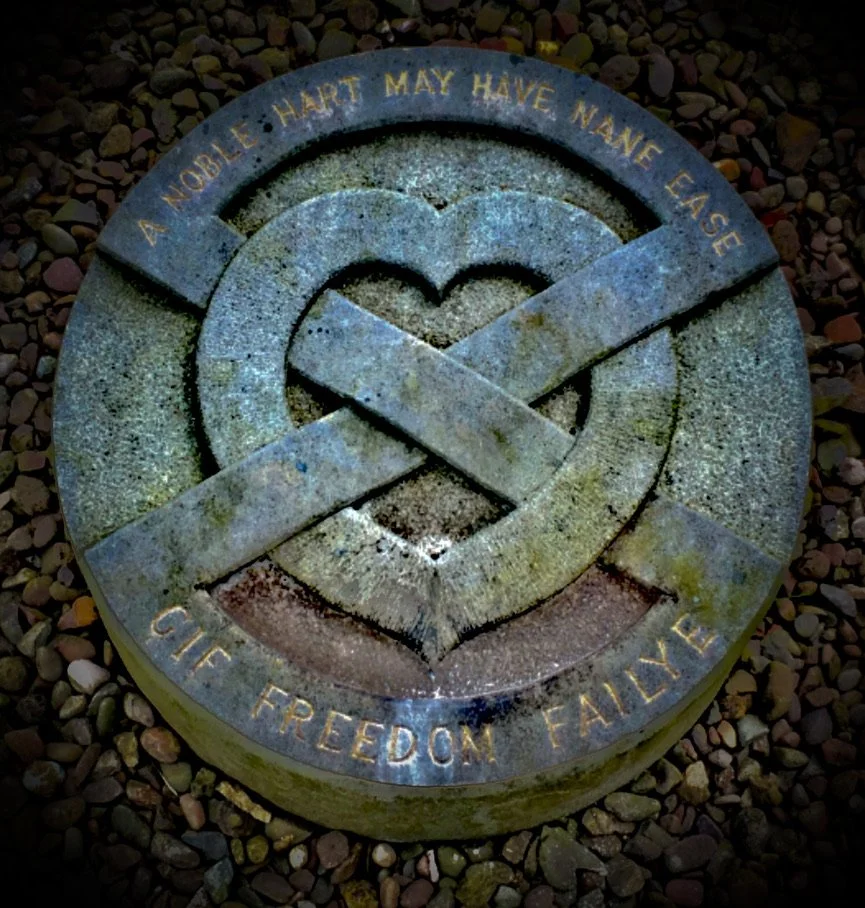The Magic of the Stone Circles
You won’t find the fictitious stone circle of Craigh Na Dun from the novel Outlander on any map. Yet, the Calanais Standing Stones and Clava Cairn, just outside of Inverness, inspired the author in her creation of one of the most celebrated historical Scottish romance novels of all time. Were the ancient standing stones of Tuilyies, the remnants of an ancient stone circle, likewise an inspiration? Located just off of Cairneyhill near Culcross, it acted as a filming location for the series, as did Dunfermline Abbey, the last resting place of Robert The Bruce’s heart. Alike Outlander’s Craigh Na Dun, standing stones represent the magic and mystical elements of our world, as they have for thousands of years.
The Highland Castles
Some theorise the standing stones and circles mark the burial grounds of forgotten Neolithic Scottish chieftains or Pictish rulers. There are others who believe they represent sacred sites of ritual and sacrifice. In most cases, these are both true. The stone circles predate the burial grounds and the chambered tombs arrived later on.
It’s no surprise many of Scotland’s castles were built upon the sites of previous fortresses or abbeys. One can wonder how many of the Scottish Highlands castles, surrounded by Pictish monoliths and standing stones, were built with the actual rocks of those ancient megaliths. Had they deemed these sites strategically important, or built upon them for their sacred promise?
The Celtic Symbols Of The Standing Stones
Standing stones decorated with Pict engravings and glyphs are spread throughout Scotland. There are over a thousand standing stones throughout Brittany and the British Isles. The Pictish language and their symbols remain undeciphered. Yet the Picts merged with the Gaels long ago, and Pictish symbols eventually blended with that of their Celtic cousins. Through our understanding of Ogham, as well as most Celtic symbols, we can only derive the most basic meanings from the Pict glyphs. Conveying symbols of nature, animals, and things essential to the Pict’s daily life, their meaning remains as much of a mystery as the stones themselves.
Upon the standing stones near Scottish castles, Celtic Crosses and other symbols were later engraved. Those spirals and knots reflected the root system of a tree and of the branches touching the sky. The endless knots represent eternity, sometimes suggesting everlasting life. Others, such as those engraved upon wood or a tree, entwine symbolising everlasting love.
The Ancient Druids
Some historians believe the ancient druids spoke to trees by deciphering the patterns in which they grew. They believe the tree oriented alphabet, Ogham, represents the branches of a tree. Ogham words and symbols are also found engraved on the stones. Considered seers, gifted with the sight to see things others could not, they communicated with trees, animals, the elements, and with the gods.
The Druids were the ministers of the Tuatha de Danann or the Aos Sí, supernatural beings today equated with fairy folk, or elves. They believed those supernatural beings to be the first peoples of the world and protectors of the parallel realm. Often their homes were in mounds, in rings, or sometimes in a special tree or a loch. Venturing too near without understanding the manner in which to approach them was a dangerous affair.
They likely acted as emissaries of the gods, just as the pharaohs of Ancient Egypt. Those sacred places were likely physical representations of godly realms, much like the great pyramids, yet predating the Egyptian structures by hundreds of years. Although much of their history is lost, the historical reconstruction of that ancient society continues, with much being discovered in the submersed archaeological sites of Doggerland.
The Sacred Resting Places Of The Gods
The druids constructed the earliest standing circles from ancient wooden pillars. All the wooden circles, stone circles, and standing stones, from Stonehenge to Callanish, date back to between 8000-2000 BC. Many of these sites carry astronomical significance, lining up with the spring and autumn equinox, or the summer and winter solstice.
These astronomically aligned megaliths marked the bridges to the other world. The druids communicated with the gods by dancing in the circle around the main pillar or a grand tree, mimicking the motions of the cosmos. They would do so on holidays when the veil was thinnest between the other world and our mortal realm.
The great holidays were Samhain (Halloween), Imbolc, Beltane (May Day), and Lughnasa, celebrated during the in-between of night and day, and in-between the shift from one season to another. Later on, mediaeval Christianity mythologized that the dancing footsteps of thinly garbed witches or demons created fairy rings while worshipping the devil. The demonization of the Celtic religion, and any religion that pre-dated Christianity, was a common practise in those days.
When we look upon these ancient standing stones, and the great Scottish castles that were built among them, it’s impossible to not feel overwhelmed. Our ancient ancestors recognised something in these sacred places. They recognised their mystical significance. What drove our ancestors to erect these ancient wonders? We may never know, but we can go there and hope to experience some of that magic for ourselves.
